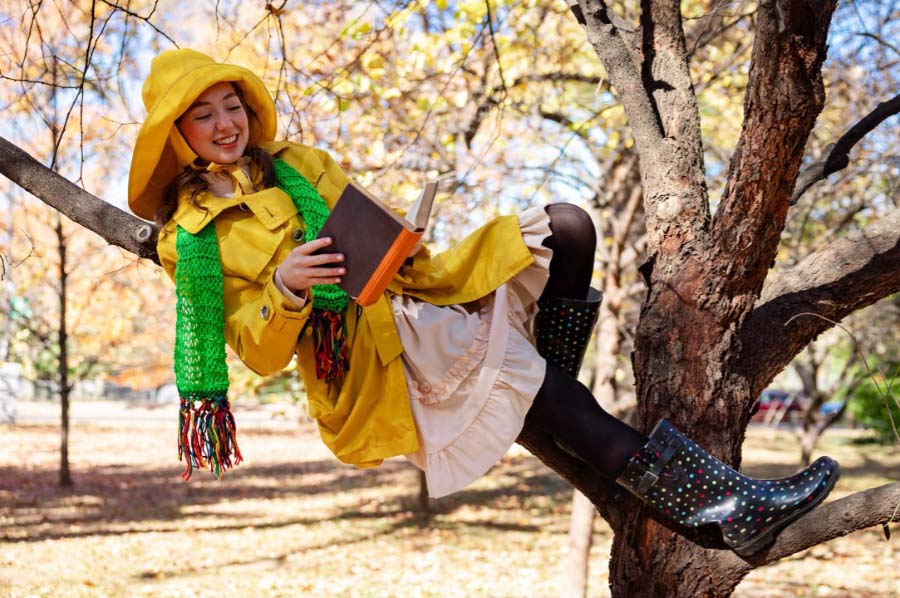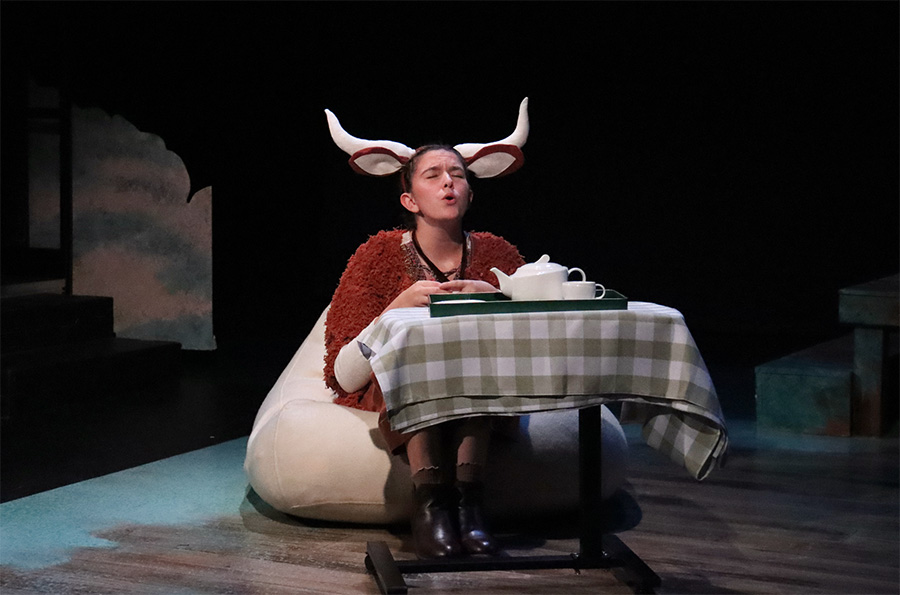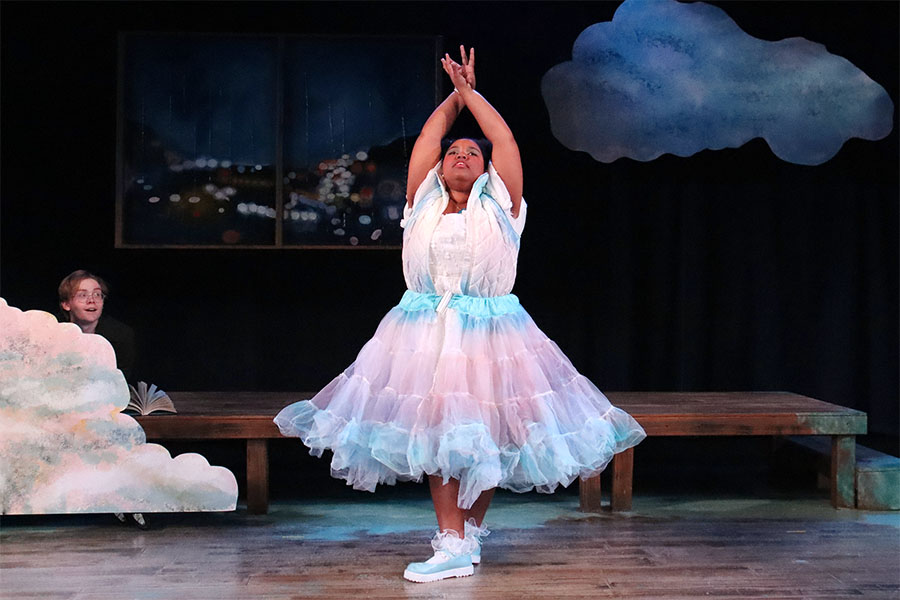Costume Design for an AU Theater Production: A CAS Conversation with Ted Hill
In CAS Conversations, we sit down with students, faculty, staff, and alumni to dive into their unique insights, experiences, and ideas. From classroom innovations and personal stories to community impact, CAS Conversations offers fresh perspectives from the incredible people shaping our campus and beyond.
 Photo: Ethan Kauffman
Photo: Ethan Kauffman
Last fall, Ted Hill (CAS ’25) got a rare opportunity for a student: he worked as the costume designer for the Department of Performing Arts (DPA) production of Sometimes the Rain, Sometimes the Sea. As full designer, Hill was charged with creating the show’s costumes from conception to completion. The play is a loose retelling of Hans Christian Anderson’s The Little Mermaid, where a Little Rain Cloud falls in love with a human. Created by Julia Izumi and directed by Nick Martin, the production sold out in Katzen’s Studio Theatre in November.
Hill spoke with us about his background in theater and the process of creating costumes for the production.
 Photo: Elena Zimmerman
Photo: Elena Zimmerman
EW: Congratulations on completing your first DPA production as costume designer! Can you tell me about your areas of interest as a theater arts major?
TH: Sure! I mostly work in costume design, creating costumes and working in wardrobe. I’ve dabbled in other areas too. I’ve worked in carpentry, run light and sound boards, and focused stage lights. Still, costumes are my passion—they’re where I feel most at home.
EW: What is it about costume design that drew you in?
TH: I’ve always been drawn to clothing. I’ve always loved bold, colorful outfits. When I got to college, I used clothing to express myself and explore my identity.
I’m not an actor—I don’t use big gestures or perform outwardly—but I can communicate through clothing. Designing costumes lets me take that feeling and apply it to characters. I love working on fun, whimsical plays. For example, I worked on a carnival-themed Romeo and Juliet where I designed bright, clown-inspired costumes. That was such a blast. People know me as the “clown guy” or the “drag guy” because I gravitate toward big, bold designs.
EW: Did your interest in theater start out with acting and then branch out into design?
TH: Yes, I was Fiona in Shrek the Musical Jr. in middle school and later played Vice Principal Panch in The 25th Annual Putnam County Spelling Bee in high school. Those experiences also shaped my interest in costumes. In high school, I didn’t feel great about what I wore on stage—it wasn’t designed with me in mind, and it didn’t fit well. It made me think about how important it is for performers to feel confident in what they’re wearing.
COVID-19 hit during my junior year of high school, so I didn’t get to experience a fully developed high school theater program. Instead, I turned to online technical theater classes, which included costume design. That’s when I realized I could create clothing that was bold, colorful, and expressive.
 Photo: Elena Zimmerman
Photo: Elena Zimmerman
EW: How do you approach costume design for a production?
TH: It’s a collaborative process. For student productions, it starts with a conversation with the director. I’ll ask about the vision for the show—what they imagine for the set, the costumes, and the overall aesthetic.
From there, I gather inspiration. I usually create collages or mood boards for each character to capture their vibe, color palette, and style. For example, for one character, I included vintage raincoats and Victorian children’s clothing to show the duality of their persona.
Once I have a sense of the characters, I pull garments from the costume shop, sketch renderings, and work closely with the actors during fittings. Costumes often evolve during this process. Practical considerations—like needing a costume that allows for a ballet sequence—can change everything. It’s all about balancing vision and functionality.
EW: What role do you think costumes play in a production?
TH: Costumes are for both the audience and the actors. For the audience, they visually reinforce who the characters are and help tell the story. For the actors, costumes transform how they move and embody their roles.
I love collaborating with actors. I’ll ask them questions like, “What does your character think they look like?” or “What is their ideal self-image?” It’s not just about what the character would wear, but how they see themselves. Bringing actors into the process makes the designs more meaningful and helps them connect with their roles.
EW: Do you see costume design as part of your future after graduation?
TH: Absolutely. My goal is to work in the circus industry and design costumes there. Circus was my first introduction to live performance—it’s bold, colorful, and larger-than-life, which really resonates with me.
Breaking into that industry isn’t easy, but I’d love to do both circus and theater. I’ve also talked with classmates about starting a transgender theater troupe. Ideally, I’d balance circus work with theater projects, collaborating with the amazing people I’ve met here.